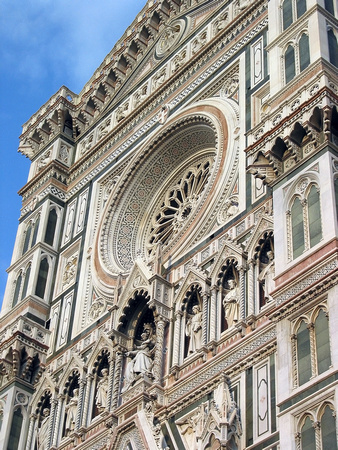Santa Maria del Fiore
Built on the ancient sacred area of the Roman castrum, the Basilica of Santa Reparata, together with a number of other religious buildings, formed the original nucleus of what was to become the religious heart of today's Florence. There was almost certainly a Baptistery as evidence of the ancient connection with the Cathedral.
What is certain is that between the XI and XIII centuries this area was enlarged and embellished as part of the city's more generalised economic and cultural rebirth. The Basilica of Santa Reparata was enlarged and the Baptistery was probably entirely rebuilt to become what we can see today. In that same period, the city's walls were enlarged, Palazzo Vecchio was built (then called 'of the Priors) and so were two monumental churches: Santa Maria Novella and Santa Croce.
Some buildings linked to social solidarity grew up around the Cathedral, that is the Arch-confraternity of Mercy, the Bigallo Orphanage, the Hospital of St John Evangelist. The latter, a hospital complex that would make Florence famous, is now completely lost. Before all these exceptional scale changes, the old Cathedral though enlarged was decidedly inadequate for the new city image that Florence was building for itself.
The need to build a new Cathedral was born, something that could rightly represent the power and stability of the Florentine Republic: thus a civic value to be assigned to a religious monument.
The new Cathedral, built by the official Municipal architect, Arnolfo di Cambio (builder of Palazzo Vecchio), was born as public works and financed by the Town Hall itself, 'so that the industry and power of men cannot invent nor ever undertake something that is bigger or more beautiful'. A new dedication was decided on: no longer to the oriental martyr, Saint Reparata, but to the Virgin Mary and the reference to the Fiore (Flower), symbol of Christ, seemed to want to unite the Cathedral to its city, whose ancient name was Florentia, in a sacred bond.


